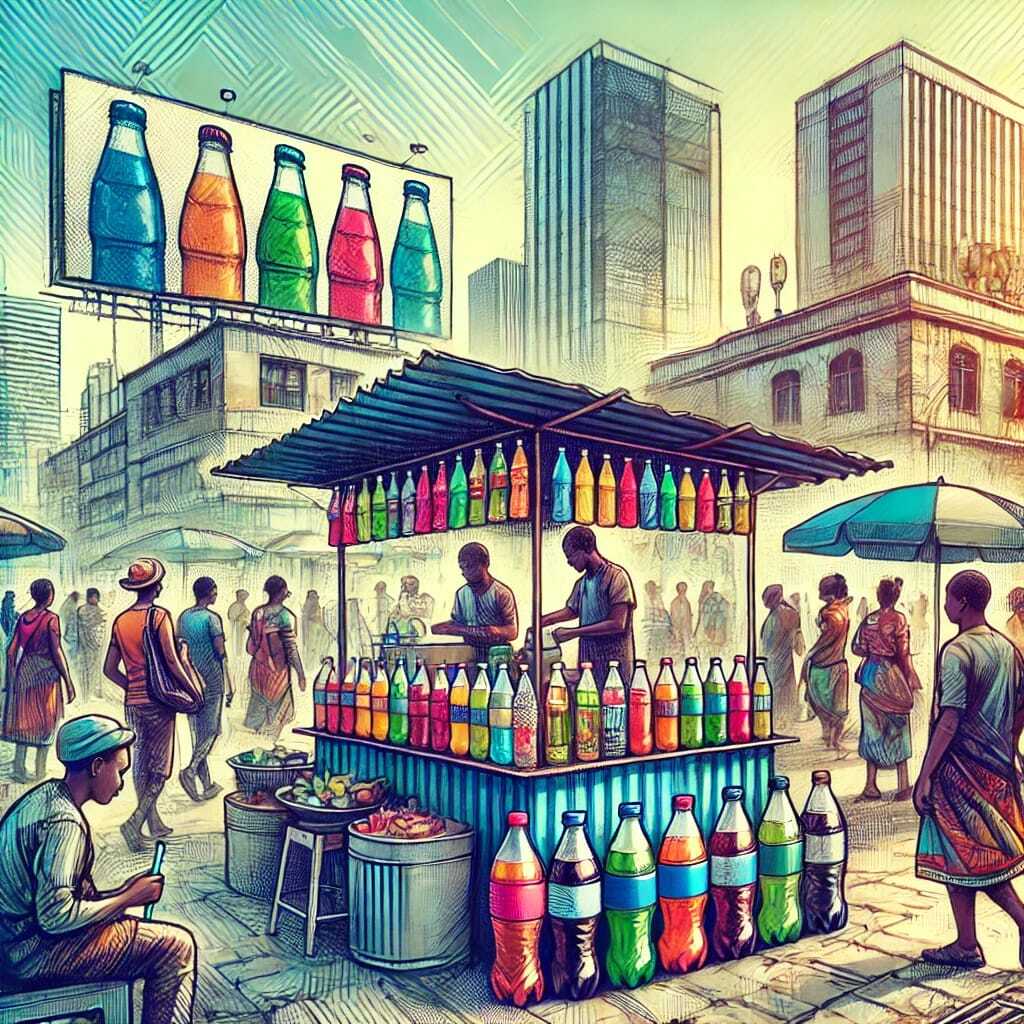Africa's Soft Drink Market Poised for Steady Growth Through 2035
March 28, 2025 – The African soft drink market is on track for consistent growth over the next decade, driven by rising consumer demand and population growth. According to recent market data, the market is expected to register a Compound Annual Growth Rate (CAGR) of +3.4% from 2024 to 2035, with market volume projected to reach 156 billion litres by 2035. In value terms, the market is anticipated to expand at the same CAGR of +3.4%, reaching $105.5 billion by the end of the forecast period.
Current Market Landscape: Consumption Trends and Market Value
Soft drink consumption across Africa showed modest growth in 2024, rising by 1.6% to reach 108 billion litres, despite experiencing a slight dip from its 2019 peak of 113 billion litres. Over the past decade (2013–2024), consumption increased at an average annual rate of +4.6%, reflecting an overall positive trend despite periodic fluctuations.
In monetary terms, the market value of soft drinks in Africa grew by 3.1% in 2024, reaching $73.1 billion, reflecting the revenues of producers and importers. The market achieved its peak value in 2022 at $75.6 billion, but a slight decline followed, with 2023 and 2024 seeing more restrained momentum.
Top Soft Drink Consumers and Market Leaders
In 2024, Sudan, Nigeria, and Ethiopia emerged as the top consumers, accounting for 42% of total consumption. Sudan led the pack with 22 billion litres, followed by Nigeria with 16 billion litres and Ethiopia with 8.1 billion litres.
In value terms, the largest soft drink markets were:
- Nigeria: $11.3 billion
- Ethiopia: $9.1 billion
- Sudan: $6.9 billion
Per capita consumption revealed striking trends, with Sudan leading at 453 litres per person in 2024. South Africa (78 litres), Morocco (75 litres), and Côte d'Ivoire (74 litres) followed, while the global average stood at 73 litres per person.
Production Performance and Trends
Production trends closely mirrored consumption, with soft drink production rising by 1.6% in 2024 to match the 108 billion litres consumed. Sudan, Nigeria, and Ethiopia collectively produced 43% of total output, while Egypt, South Africa, and other nations accounted for another 25%.
Ghana stood out with the highest production growth, recording a remarkable CAGR of +11.2% from 2013 to 2024.
Imports Show Modest Growth with Democratic Republic of the Congo Leading
Soft drink imports grew by 13% in 2024, reaching 1.6 billion litres, despite a slight dip from the 2019 peak of 2 billion litres. The Democratic Republic of the Congo was the largest importer with 324 million litres, followed by South Africa and Botswana.
In value terms, total soft drink imports amounted to $1.1 billion in 2024, with South Africa ($147 million), the Democratic Republic of the Congo ($142 million), and Libya ($71 million) emerging as the largest importers.
Exports Continue to Rise with South Africa Leading the Way
Soft drink exports from Africa witnessed a 16% increase in 2024, reaching 1 billion litres. South Africa remained the dominant exporter, accounting for 44% of total exports with 450 million litres. Tanzania, Uganda, and Zambia followed, contributing a combined 28% of total exports.
In value terms, African soft drink exports amounted to $735 million in 2024, with South Africa ($279 million), Zambia ($146 million), and Tanzania ($76 million) collectively capturing 68% of total export revenue.
Market Outlook: Strong Growth Driven by Urbanization and Demographics
Looking ahead, the African soft drink market is projected to maintain positive growth, driven by urbanization, increasing disposable incomes, and shifting consumer preferences toward ready-to-drink beverages. However, the market may face challenges such as supply chain disruptions, inflationary pressures, and changing regulations, which could moderate growth in the coming years.
Follow & Subscribe:
👉 Africa Agri Market on LinkedIn for the latest updates and insights.
🌐 Visit us at www.africa-agri-market.com for more information!
